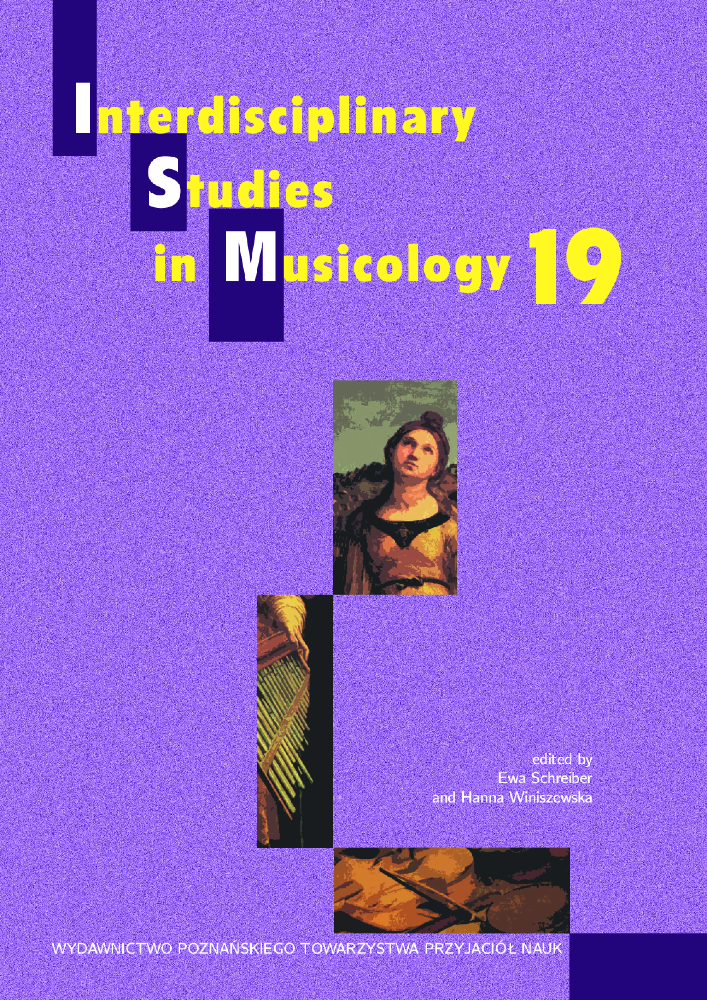Abstrakt
In the panorama of Polish music of the 2nd half of the 20th century the works of Silesian composers stand out. They were born in 1951 and thus they are referred to as the ‘Generation 51’ or the ‘Stalowa Wola Generation’ (from the place of their debut at the Festival ‘Young Musician for the Young City’ in Stalowa Wola in 1976): Eugeniusz Knapik, Aleksander Lasoń and Andrzej Krzanowski. They constituted the first generational phenomenon of such significance in Polish music since the debut of ‘Generation 33’ (Krzysztof Penderecki, Henryk Mikołaj Górecki and others). The musical style of these young authors was in tune with the Polish popular phenomenon of the 1970s of ‘New Romanticism’, consisting in a return to certain artistic and aesthetic values lost in modernism and avant-garde. One of the distinguishing features of Knapik’s, Lasoń’s and Krzanowski’s work is the application of various ‘intertextual strategies’ – quotations, allusions, and clear references to more or less specific musical traditions. In the works of ‘Generation 51’ composers, these strategies have a certain superior ‘axiological sense’ (Władysław Stróżewski), which is far from a purely ludic, postmodernist play on conventions and texts. The aim of the text is a review and an attempt to interpret those strategies. A methodological reference point will be the semantic analyses of possible intertextual references performed by Mieczysław Tomaszewski and Stanisław Balbus.
Finansowanie
This publication is a result of the research project DAINA 1 No. 2017/27/L/ HS2/03240 funded by The National Science Centre (NCN) in Poland
Bibliografia
Balbus, S. (1990). Intertekstualność a proces historycznoliteracki [Intertextuality and the Historical and Literary Process]. Kraków: Uniwersytet Jagielloński.
Balbus, S. (1996). Między stylami. Second edition. Kraków: Universitas.
Bias, I. (Ed.) (2001a). Aleksander Lasoń. Portret kompozytora [Aleksander Lasoń. The Portrait of a Composer]. Katowice: Akademia Muzyczna.
Bias, I. (Ed.) (2001b). Eugeniusz Knapik. Kompozytor i pianista [Eugeniusz Knapik. Composer and pianist]. Katowice: Akademia Muzyczna.
Chłopecki, A. (1986). W poszukiwaniu utraconego ładu. Pokolenie Stalowej Woli [In Search of Lost Order. Stalowa Wola Generation]. In L. Polony (Ed.). Przemiany techniki dźwiękowej, stylu i estetyki w polskiej muzyce lat 70. [Transformations of Sound Techniques, Style and Aesthetics in Polish Music of 1970s] (pp. 232–245). Kraków: Akademia Muzyczna.
Droba, K. (2011). Spotkania z Eugeniuszem Knapikiem [Meetings with Eugeniusz Knapik]. Katowice: Akademia Muzyczna.
Kosz, S. (2011). Corale, interludio e aria na flet, klawesyn i zespół [Corale, interludio e aria for flute, harpsychord and string ensemble]. In Eugeniusz Knapik. W górę, w ciszę… [Eugeniusz Knapik. Up into the Silence…] [Festival book] (p. 40). Katowice: Akademia Muzyczna.
Krzanowski Andrzej [PWM Catalogue] http://pwm.com.pl/pliki/0/9/4/2637_2507_Krzanowski_11.pdf
Malecka, T. (2011). Henryk Mikołaj Górecki wobec myśli Jana Pawła II [Henryk Mikołaj Górecki and the thought of John Paul II]. Ruch Muzyczny, 9, 6–9
Pater, J. (Ed.) (2000). Muzyczny świat Andrzeja Krzanowskiego [Andrzej Krzanowski’s Musical World]. Kraków: Akademia Muzyczna.
Polony, L. (1986). O co nam szło [What We Were About]. In L. Polony (Ed.) Przemiany techniki dźwiękowej, stylu i estetyki w polskiej muzyce lat 70. (pp. 72–83). Kraków: Akademia Muzyczna.
Read, H. (1973). O pochodzeniu formy w sztuce [The origins of form in art] (E. Życieńska, Trans.). Warszawa: PIW.
Stępień, W. (2011). ‘Up into the silence’ na sopran, baryton i orkiestrę. Eugeniusza Knapika pożegnanie z XX wiekiem [‘Up into the silence’ for soprano, baritone and orchestra. Eugeniusz Knapik’s Farewell to the Twentieth Century]. In Eugeniusz Knapik. W górę, w ciszę… [Festival book] (pp. 68–71). Katowice: Akademia Muzyczna.
Stróżewski, W. (2002). Płaszczyzny sensu w dziele malarskim [Planes of Meaning in a Painting]. In W. Stróżewski. Wokół piękna. Szkice z estetyki [Around Beauty. Sketches on Aesthetics] (pp. 257–268). Kraków: Universitas.
Strzelecki, P. (2006). ‘Nowy romantyzm’ w twórczości kompozytorów polskich po roku 1975 [‘New Romanticism’ in the Work of Polish Composers after 1975]. Kraków: Musica Iagiellonica. Szulakowska-Kulawik, J. (2010). Obrazy dźwiękowe między tekstami. Katedry i góry w muzyce [Sound Images Between Texts. Cathedrals and Mountains in Music]. Katowice: Akademia Muzyczna.
Tomaszewski, M. (1994). Krzysztof Penderecki i jego muzyka. Cztery eseje [Krzysztof Penderecki
and his music. Four Essays]. Kraków: Akademia Muzyczna.
Tomaszewski, M. (2005). Utwór muzyczny w perspektywie intertekstualnej [A work of music from
an Intertextual Perspective]. In M. Tomaszewski. O muzyce polskiej w perspektywie intertekstualnej.
Studia i szkice [About Polish Music from an Intertextual Perspective. Studies and
Sketches] (pp. 9–36). Kraków: Akademia Muzyczna.
Tomaszewski, M. (2011). Pamiętam jak dziś [I Remember as if It Was Today]. In Eugeniusz Knapik.
W górę, w ciszę… [Festival book] (pp. 6–7). Katowice: Akademia Muzyczna

